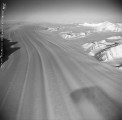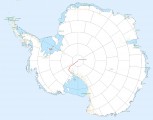New Route via Reedy Glacier to South Pole
Dispatches
-
2017-01-10


-
2017-01-09



-
2017-01-08



-
2017-01-07



-
2017-01-06



-
2017-01-05



-
2017-01-04



-
2017-01-03



-
2017-01-02



-
2016-12-31


-
2016-12-31



-
2016-12-30



-
2016-12-29



-
2016-12-28



-
2016-12-27



-
2016-12-26



-
2016-12-25



-
2016-12-24



-
2016-12-24



-
2016-12-23


-
2016-12-22


-
2016-12-21



-
2016-12-21


-
2016-12-20



-
2016-12-19



-
2016-12-18



-
2016-12-17



-
2016-12-16



-
2016-12-15



-
2016-12-14



-
2016-12-13


-
2016-12-12



-
2016-12-12


-
2016-12-11



-
2016-12-10



-
2016-12-09



-
2016-12-08



-
2016-12-07


-
2016-12-06



-
2016-12-05


-
2016-12-04



-
2016-11-30



Nov 30
#1: Test blog
Published at 19:34
Hi everyone
Welcome to the inaugural South Pole via Reedy Glacier blog. This is a test blog to check that everything is working OK - image uploads, social media connection, map tracking, subscriber notifications etc.
In a few days Rob Smith, Keith Tuffley and I will be flying from Punta Arenas, Chile to Union Glacier Camp in Antarctica and onward to our start point at the base of the untravelled Reedy Glacier. With the Ross Ice Shelf to the north and the Transantarctic Mountains to the south the views will be spectacular, and unique. Only a handful of scientists and pilots have seen the Reedy Glacier, a good reason in itself to take this route.
But Reedy is also a logical choice. It is one of many large glaciers draining the polar plateau through the Transantarctic Mountains, falling steadily over its 200km length (around one third of the entire route) from an altitude of 2200m at its head to 600m at the foot of the range. We begin lower still at the grounding zone of the Ross Ice Shelf, Antarctica’s contiguous coastline. Reedy's gentle gradient is responsible for an unusually crevasse-free surface, in the lower sections at least, and is almost snow free. The climate is so cold that there are extensive ablation (melting) areas which are permanently snow-free. This exposed ice should make for fast travel until we reach the polar plateau above. Then it’s a grind across the frozen windswept high plains to the pole.
This will be the second Transantarctic glacier that I will have the privilege of traversing for the first time. In 1998, together with Jon Muir and Peter Hillary, I made the first traverse of the Shackleton Glacier to the pole, which lies to the west of the Reedy. The classic routes of the Beardmore and Axel Heiberg glaciers also drain through these mountains. This is an area of Antarctica both rich in history and brimming with discovery.
Eric
Welcome to the inaugural South Pole via Reedy Glacier blog. This is a test blog to check that everything is working OK - image uploads, social media connection, map tracking, subscriber notifications etc.
In a few days Rob Smith, Keith Tuffley and I will be flying from Punta Arenas, Chile to Union Glacier Camp in Antarctica and onward to our start point at the base of the untravelled Reedy Glacier. With the Ross Ice Shelf to the north and the Transantarctic Mountains to the south the views will be spectacular, and unique. Only a handful of scientists and pilots have seen the Reedy Glacier, a good reason in itself to take this route.
But Reedy is also a logical choice. It is one of many large glaciers draining the polar plateau through the Transantarctic Mountains, falling steadily over its 200km length (around one third of the entire route) from an altitude of 2200m at its head to 600m at the foot of the range. We begin lower still at the grounding zone of the Ross Ice Shelf, Antarctica’s contiguous coastline. Reedy's gentle gradient is responsible for an unusually crevasse-free surface, in the lower sections at least, and is almost snow free. The climate is so cold that there are extensive ablation (melting) areas which are permanently snow-free. This exposed ice should make for fast travel until we reach the polar plateau above. Then it’s a grind across the frozen windswept high plains to the pole.
This will be the second Transantarctic glacier that I will have the privilege of traversing for the first time. In 1998, together with Jon Muir and Peter Hillary, I made the first traverse of the Shackleton Glacier to the pole, which lies to the west of the Reedy. The classic routes of the Beardmore and Axel Heiberg glaciers also drain through these mountains. This is an area of Antarctica both rich in history and brimming with discovery.
Eric
- Name: Punta Arenas
- Elevation: 65 m
- Latitude: 53° 9’ 37” South
- Longitude: 70° 54’ 38” West




































Comments